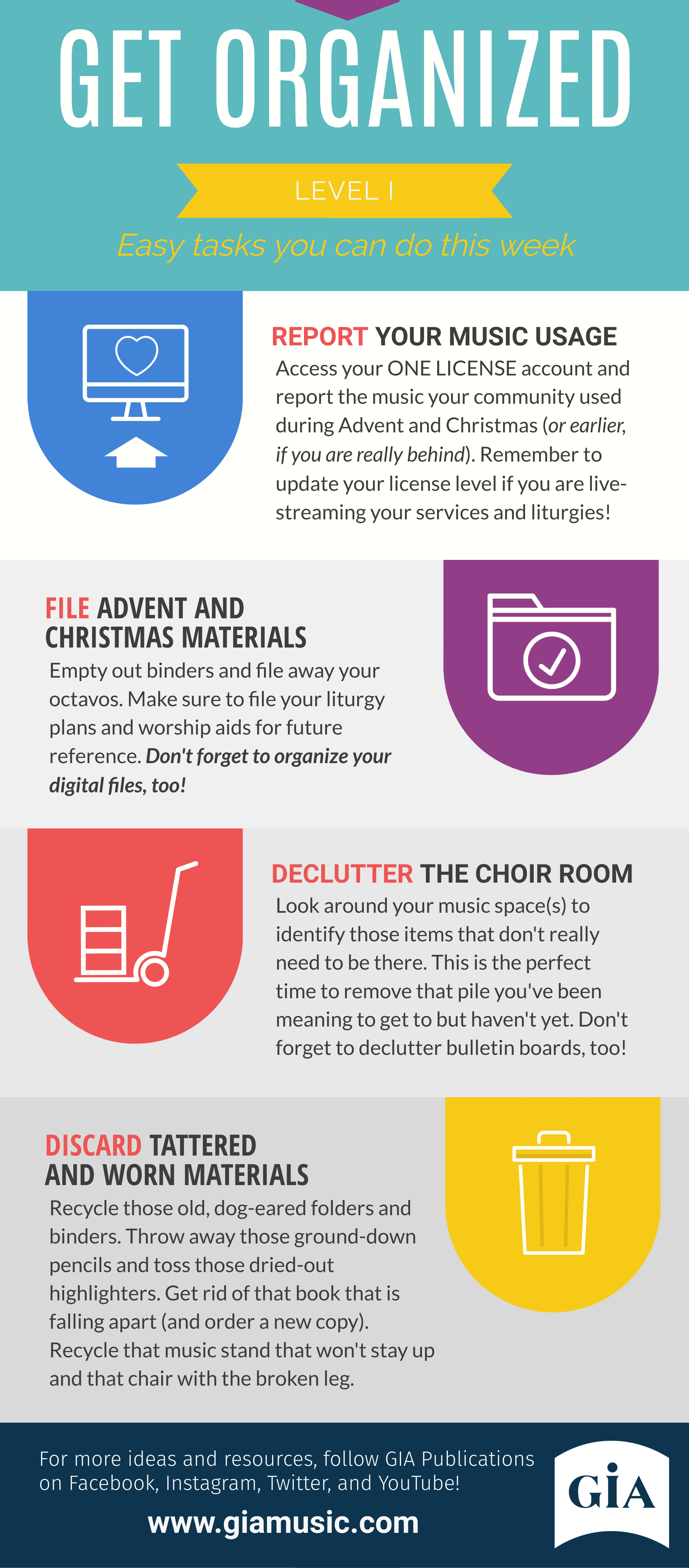
January is “Get Organized” month, and we are sharing advice, tips, ideas, and resources for how you can organize your music ministry more effectively.
We’re all working hard to do a good job and get ahead. But it is easy to feel stuck, especially when facing a potentially big task like organizing materials, spaces, time, etc. Sometimes the most helpful information comes from colleagues as a response to the question, “how do YOU handle ______.”
In this spirit of collaboration, we asked one of our own, GIA’s Senior Project Editor Michael Silhavy, how he is planning on getting organized in the weeks ahead. A veteran of parish, cathedral, diocesan, and university music and liturgical ministry, Michael has the following recommendations for strategizing our efforts:
1. If you will be having simultaneous masses on easter morning due to a restriction of worshippers in a space, book your keyboard players, cantors and instrumentalists immediately.
2. I use GIA filing boxes to store my instrumental music. I have boxes marked: Flute and Keyboard, C Instrument and Keyboard, Brass Quartet, Brass Quintet, Two C Instruments and Keyboard, Trumpet and keyboard, Violin and Keyboard, Mixed Ensemble, and so forth. I find it more helpful to organize by instrumental forces than title.
3. Go through your music files and and remove the filing boxes/folders of octavos identical to what’s in your hymnal. Be certain the octavos are not expanded versions of what’s in your hymnal. No need to keep that Isele Holy Cross Mass Lamb of God octavo in your files as it will (always?) be in a GIA hymnal. (Editor’s Note: GIA is currently running a sale on filing boxes and other products to help you get organized! More informaiton and a link are found below)
4. Map out every prelude and postlude you wish to play for the next 4 months.
5. Map out your service music for the rest of the calendar/liturgical year: Winter Ordinary Time, Lent, Holy Week, Easter Season, Summer Ordinary Time, Fall Ordinary Time, Advent
6. Delete outdated schedules from your computer. No need to remember that Linda was scheduled to cantor on October 4, 2020.
7. Do make sure that all your congregational, cantor and choral repertoire is captured in one document. How nice to come back to in three years to see what was sung, what needs to kept and what needs to be taught and programmed.
Look for more advice and additional recomendations throughout the month of January. Don’t miss our special “Get Organized” sale to save on some of our most popular products and resources. And if you haven’t yet, check out our “Level I” checklist below.
Happy organizing!


Michael Silhavy
GIA Publications
Michael Silhavy is senior project editor at GIA Publications and has worked in parish, cathedral, diocesan and university settings. In addition to his work at GIA, Michael serves as Music Director at St. Mary’s Catholic Church in Riverside, Illinois.


Recent Comments